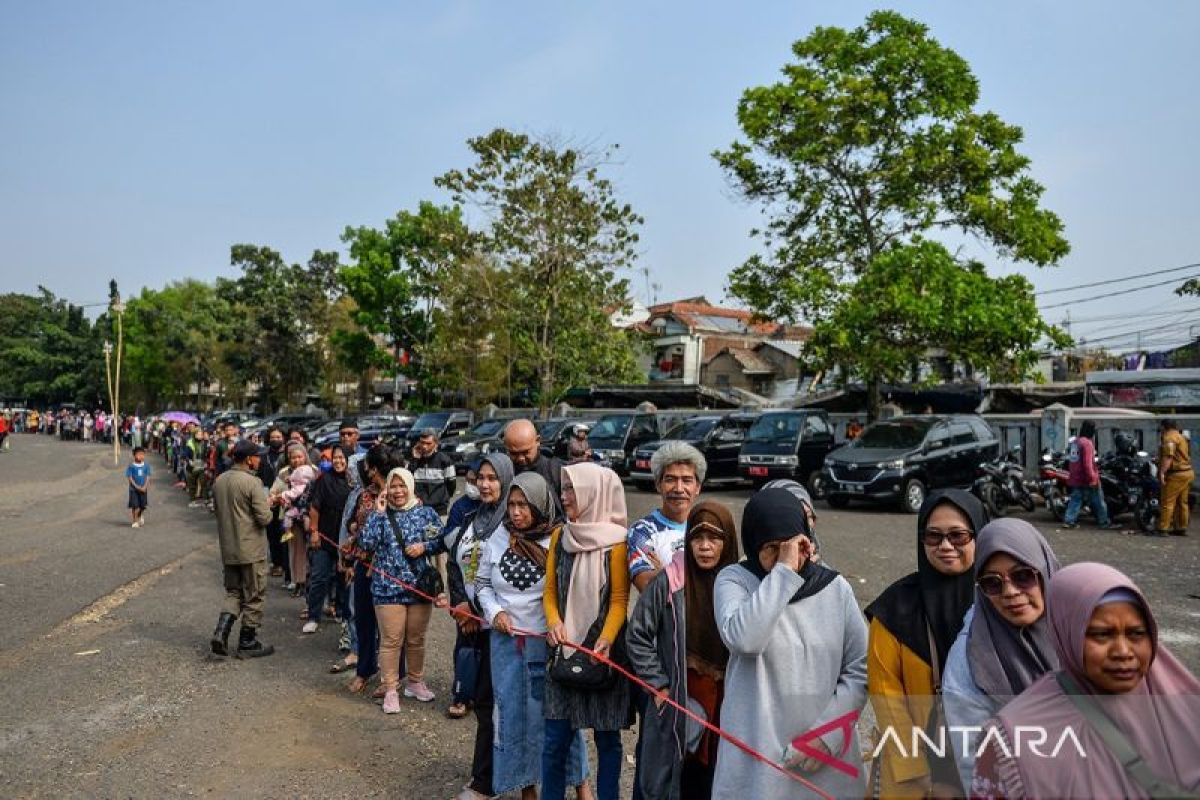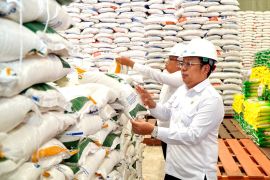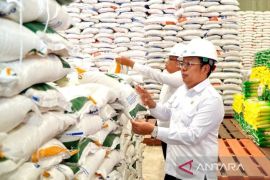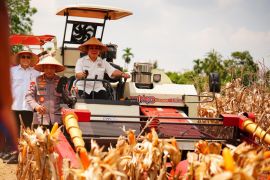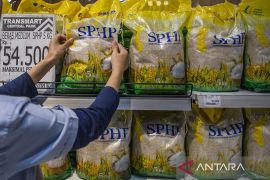President Joko Widodo (Jokowi), while inspecting a warehouse belonging to state-run logistics company Bulog in Karawang district, West Java, on September 9, 2023, instructed it to conduct cheap market operations to provide rice at lower prices to the people.
According to data from the United Nations' Food and Agriculture Organization, the index of global rice price has hit 142.4 points, the highest level recorded in the past 15 years.
Several major rice-producing countries, including India, have decided — or are at least planning — to impose restrictions and even ban rice exports to build domestic food security. This has resulted in a global increase in rice prices and posed the threat of potential rice scarcity globally.
Since July 2022, Indonesia has been witnessing an increase in domestic rice prices on account of national production shortfalls due to the El Nino-induced long dry season, which is projected to last until early 2024.
Prices have also shot up on the back of an increase in fertilizer prices due to the ongoing Russia-Ukraine war.
According to the Agriculture Ministry, paddy fields in seven provinces experienced drought of medium-level severity, while drought at a lower level of severity was recorded in 20 provinces in 2022.
As a result, the price of medium-quality rice reached Rp12,400 per kilogram (US$0.80) in December 2022, an increase compared to the stable price range of Rp11,300 (US$0.73) to Rp11,400 (US$0.74) per kilogram recorded during the January–June 2022 period.
The National Food Agency (Bapanas) has revealed that the price of premium-quality rice, which stood at Rp13,140 (US$0.85) in January this year, has increased to Rp14,230 (US$0.92) per kilogram over the course of September. Meanwhile, the price of medium-quality rice has increased from Rp11,550 (US$0.75) to 12,580 (US$0.81) per kilogram this month.
At the retail level, the price of medium-quality rice has increased from Rp10 thousand (US$0.49) to Rp12 thousand (US$0.77) per kilogram, and the rate of premium-quality rice has risen from Rp13,500 (US$0.87) to Rp15,500 (US$1) per kilogram.
On September 1, Bulog also increased the price of rice offered via cheap market operations from Rp47 thousand (US$3.05) to Rp54,500 (US$3.54) per five kilograms. Meanwhile, the highest retail price of rice at traditional markets climbed from Rp9,450 (US$0.61) to Rp10,900 (US$0.70) per kilogram.
The government has been striving to augment its current rice reserves of 1.6 million tons by importing additional stocks of 400 thousand tons from Vietnam and Thailand as well as 250 thousand tons from Cambodia.
Secretary of Bulog, Awaludin Iqbal, expressed optimism that, despite distributing a total of 630 thousand tons of rice aid to 21.3 million beneficiary families, the government will still succeed in securing as much as 1.2 million tons of rice reserves by the end of 2023 through imports as well as by absorbing rice produced by local farmers.
The government has decided to distribute rice aid of 10 kilograms each to as many as 21.3 million beneficiary families in September, October, and November as a continuation of a program carried out from March to May this year.
Dwi Andreas, head of the Biotech Center of the Bogor Agricultural Institute (IPB), has predicted that Indonesia will continue to see increases in rice prices until February or March 2024. However, he observed that the government's market operations and rice aid program would soften the rate of the increase.
The current prices of rice have come as a fresh breeze for farmers who have suffered economic losses in the past three years, according to Andreas, who also serves as chairperson of the Indonesian Seed Banks and Agricultural Technology Association (AB2TI).
Based on data provided by Statistics Indonesia (BPS), the average value of the farmers' exchange rate during the 2021–2022 period was recorded at 98.5, indicating losses suffered by farmers due to production costs exceeding the selling price.
It should be noted that farmers would only make profits if their exchange rate reaches a value of above 100. Since 2021, the exchange rate has only hit the preferred value of 111.85 in August this year.
AB2TI, based on a study it conducted in 50 rice-producing districts, has revealed that from 2022 until mid-2023, farmers have suffered economic losses of Rp250 thousand (US$16.23) to Rp1 million (US$64.95) per 2 thousand square meters during each rice planting season.
Breaking free from rice reliance
The government's efforts to diversify food crops have been at odds with the fact that national rice consumption has been increasing every year.
A majority of Indonesia's population still abides by the popular phrase, "A lunch without rice is not a lunch." In fact, communities in Madura and Papua, which formerly used corn and sago as staples, have begun switching to rice as well.
According to BPS, Indonesia has been steadily witnessing increases in rice consumption, from 28.93 million tons in 2019 to 29.37 million tons in 2020, 30.04 million tons in 2021, and 30.2 million tons in 2022. The nation consumed a total of 22.69 million tons of rice in January–September 2023.
The problem is that this trend is occurring despite parties stepping up efforts to convert fertile rice fields on Java Island into residential and industrial areas as well as lay toll roads.
Bearing that in mind, the government needs to find a way to expand the country's rice centers outside Java while intensifying studies to identify superior varieties of rice.
In order to help the nation break free from rice reliance, the government needs to encourage more people to optimize Indonesia's potential alternative food crops, including cassava, sweet potato, grains, corn, and sago.
Indonesia will soon enter a frenetic phase during the Christmas and New Year holidays, the 2024 General Elections, and Eid al-Fitr, which will push the government to ensure that its cheap market operations and rice aid program do not hinder efforts to secure rice reserves and control the price of the commodity.
Furthermore, the government needs to formulate genuinely effective, accurate, and timely rice-related policies to tackle potential adverse impacts resulting from rice being used as a political instrument before and during the political year of 2024.
Related news: Regions should hold market operations for rice price stabilization
Related news: Jakarta bolsters Cheap Food Movement to tackle soaring rice prices
Translator: Nanang S, Tegar Nurfitra
Editor: Azis Kurmala
Copyright © ANTARA 2023
